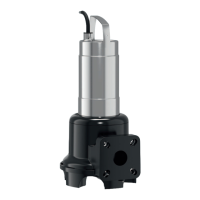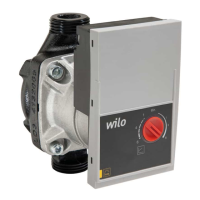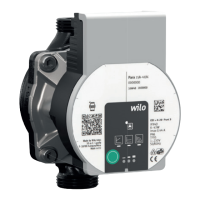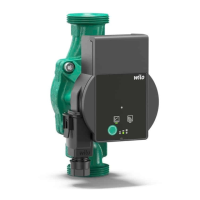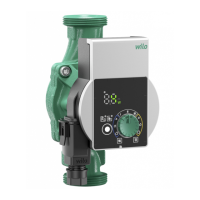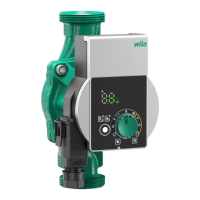en Installation and electrical connection
12 WILO SE 2019-02
5.3 Storage
DANGER
Danger due to fluids hazardous to health!
If the pump is used in fluids hazardous to health, de-
contaminate the pump after dismantling and before
carrying out any other work! There is a risk of fatal
injury! Observe the specifications in the work regula-
tions! The operator must make sure that the person-
nel have received and read the work regulations!
WARNING
Sharp edges on the impeller and suction port!
Sharp edges can form on the impeller and suction
port. There is danger of limbs being severed! Pro-
tective gloves must be worn to protect from cuts.
CAUTION
Total damage due to moisture ingress
Moisture ingress in the power supply cable damages
the power supply cable and the pump! Never im-
merse the end of the power supply cable in a fluid
and firmly seal it during storage.
Newly supplied pumps can be stored for one year. Contact cus-
tomer service to store the pump for more than one year.
The following must be observed for storage:
ƒ Place the pump upright (vertical) on a firm bearing surface and
secure it against slipping and falling over!
ƒ The max. storage temperature is -15°C to +60°C (5°F to
140°F) at a max. relative humidity of 90%, non-condensing.
Frost-proof storage at a temperature of 5°C to 25°C (41°F to
77°F) with relative humidity of 40% to 50% is recommen-
ded.
ƒ Do not store the pump in rooms in which welding work is car-
ried out. The resulting gases or radiation can corrode the
elastomer parts and coatings.
ƒ Seal the suction and pressure connection tightly.
ƒ Protect power supply cables against kinking and damage.
ƒ Protect the pump from direct sunlight and heat. Extreme heat
can cause damage to the impellers and the coating!
ƒ Impellers must be turned by 180° at regular intervals (3–
6months). This prevents locking of the bearings and renews
the lubrication film of the mechanical seal. WARNING!There
is a risk of injury due to sharp edges on the impeller and
suction port!
ƒ Elastomer parts and the coating are subject to natural brittle-
ness. Contact customer service if the pump must be stored for
more than 6months.
After storage, remove any dust and oil from the pump and check
the coating for damage. Repair damaged coatings before further
use.
6 Installation and electrical connection
6.1 Personnel qualifications
ƒ Electrical work: A qualified electrician must carry out the elec-
trical work.
ƒ Installation/dismantling: The technician must be trained in the
use of the necessary tools and fixation materials for the relev-
ant construction site.
6.2 Installation types
ƒ Vertical portable wet well installation
The following installation types are not permitted:
ƒ Vertical stationary wet well installation with suspension unit
ƒ Vertical stationary dry well installation
ƒ Horizontal installation
6.3 Operator responsibilities
ƒ Observe the locally applicable accident prevention and safety
regulations of trade associations.
ƒ Observe all regulations for working with heavy loads and un-
der suspended loads.
ƒ Provide protective equipment and ensure that the protective
equipment is worn by personnel.
ƒ Observe local regulations on the latest technology for
wastewater and sewage disposal (without faeces).
ƒ Avoid pressure surges!
Pressure surges can occur in long pressure pipes with steep
terrain. These pressure surges can lead to the destruction of
the pump!
ƒ Ensure the cooling time of the motor depending on the oper-
ating conditions and the size of the pump chamber.
ƒ Structural components and foundations must be of sufficient
stability in order to allow the device to be fixed in a secure and
functional manner. The operator is responsible for the provi-
sion and suitability of the building/foundation!
ƒ Check that the available consulting documents (installation
plans, design of the operating space, inflow conditions) are
complete and correct.
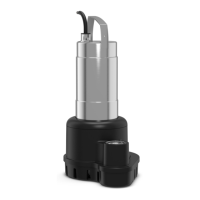
